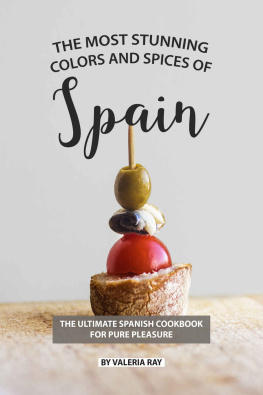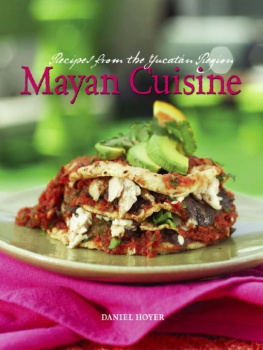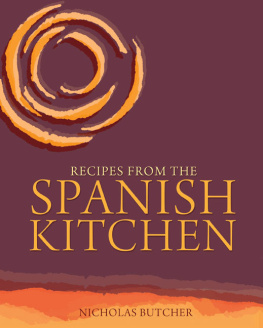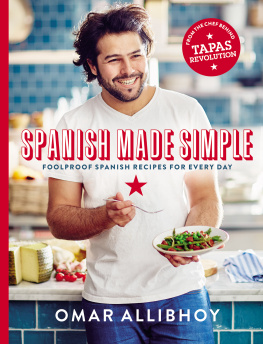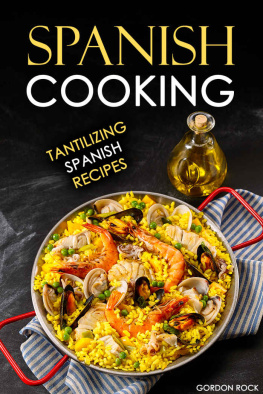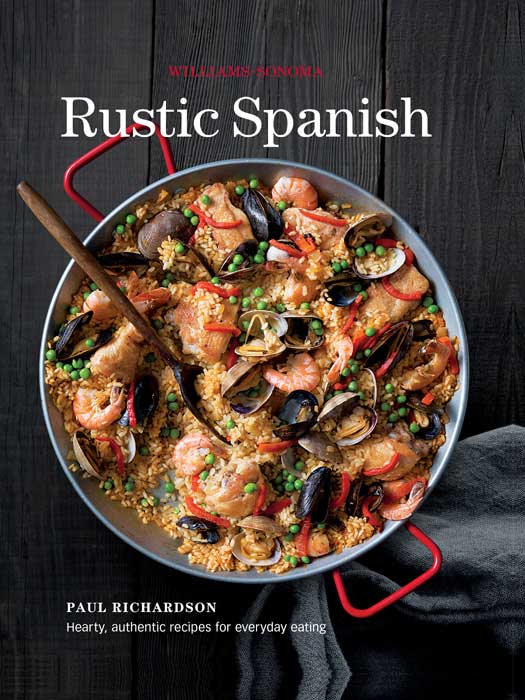When I first came to live in Spain, in 1989, I knew little about Spanish culinary culture beyond the classics of paella and gazpacho. In the years that followed, as I ate, talked, made friends, and observed local cooks in their kitchens, I came to realize this was a culinary universe with a depth and variety to rival those of Italy or France.
Since then, Spanish contemporary cuisine has taken the world by storm, with Ferran Adri and the Roca brothers in the vanguard. With all due respect to those pioneering geniuses, however, its Spanish country cooking that inspires meespecially since Ive been living and working on my own organic farm in the rural hinterland of northern Extremadura. Here at home, what I cook and eat is rustic by necessity, since most of it proceeds from my own gardens, orchards, olive groves, henhouse, and pigsty.
Rural Spanish food is soulful, nourishing, and bursting with earthy, genuine flavors. Though often hearty, it is rarely indigestible or heavy. (And theres always the siesta, that great Spanish invention, to follow a ribsticking cocido , or a big rice with all the trimmings.) It is also as diverse as Spains sixteen regions, its innumerable towns and villages, and its varied landscapes all the way from the chilly north to the tropical south. Like all cuisines worth bothering with, this one has its roots firmly in the land.
If I havent taken too many liberties with the classic recipes in this book, its partly because I havent needed to. Centuries of limited resources and the realities of eating with the seasons have taught country cooks how to be ingenious and resourceful, how to make even humble foods interesting, and how to give a lift to an everyday staple with a transforming dose of punchy flavor.
Spanish cooking is wonderfully democratic. Some of its simplest dishes are master-pieces of folk art, and there are few recipes in this book that cant be followed successfully even by inexperienced cooks.
Rustic Spanish is informal food for family, friends, and communities, best prepared and enjoyed without too much fuss or ceremony. This is my kind of food. And soon, I hope, itll be your kind of food too.
starters

mixed tapas
In recent years tapas have taken off as a culinary genre in their own right, and the lazing, grazing Spanish lifestyle has caught the worlds imagination. Plan your own tapas feast, kicking off with this quartet of aperitif-hour classics: sauted almonds; marinated olives; piquant skewers called gildas; and fried padrn peppers.
FOR THE SAUTED ALMONDS
1 cup (5 oz/170 g) blanched whole Marcona almonds
2 tablespoons olive oil
2 teaspoons fresh thyme leaves
Fine sea salt
FOR THE MARINATED OLIVES
teaspoon cumin seeds
1 orange
2 cups (10 oz/315 g) mixed black and green olives
1 clove garlic, cut lengthwise into 4 slices
2 teaspoons chopped fresh flat-leaf parsley
teaspoon pimentn dulce (sweet Spanish smoked pepper)
teaspoon red pepper flakes
cup (60 ml) olive oil
FOR THE GILDAS
8 green Basque pickled peppers (see Cooks Note)
8 cured anchovy fillets
816 large green olives, pitted
Extra-virgin olive oil for drizzling
FOR THE FRIED PADRN PEPPERS
cup (125 ml) olive oil
1 lb (500 g) padrn peppers (see Cooks Note)
Flor de Sal or other flaky sea salt
serves 6
To make the sauted almonds, preheat the oven to 350F (180C). Spread the almonds in a single layer on a rimmed baking sheet and toast, stirring once or twice, until fragrant and just starting to color, about 8 minutes. Transfer immediately to a plate and let cool for 10 minutes.
In a frying pan, heat the olive oil over medium-high heat. Add the almonds and saut, stirring constantly, until golden, 23 minutes. Using a slotted spoon, transfer the nuts to paper towels to drain.
Put the almonds in a serving bowl. Add the thyme and season to taste with salt. Using a fork, toss well. (Cover tightly and store at room temperature for up to 3 days.)
To make the marinated olives, in a small, dry frying pan, toast the cumin seeds over medium-high heat, stirring constantly, until fragrant, 23 minutes. Transfer to a saucepan.
Using a vegetable peeler, remove 3 strips of zest from the orange, each about 1 inch (2.5 cm) wide and 2 inches (5 cm) long. Cut each piece lengthwise into strips inch (6 mm) wide and add to the saucepan. Reserve the remaining zest and the orange for another use.
Add the olives, garlic, parsley, pimentn , red pepper flakes, and olive oil to the saucepan. Place over medium heat and toss to mix well. Heat until the oil starts to bubble around the edges of the pan. Reduce the heat to medium-low and cook, with the oil just bubbling occasionally, for 30 minutes, stirring now and then.
Transfer the contents of the saucepan to a serving bowl. Let cool to room temperature, then let stand for at least 1 hour or up to 24 hours to allow the flavors to develop before serving. (Store the olives in an airtight container in the refrigerator for up to 2 weeks.)
To make the gildas , bend a Basque pickled pepper at the middle and push it onto a toothpick or wooden skewer. Push the toothpick or skewer into one half of the anchovy fillet, then a green olive, followed by the other half of the anchovy to curl around the olive. Repeat the process until you have used up all the peppers, anchovies, and olives. Place on a serving platter and drizzle with olive oil.
To make the padrn peppers, in a wide frying pan, heat the olive oil over high heat. Add the peppers and turn them rapidly in the oil until they are blistered all over, 2 minutes. Remove with a slotted spoon and pile onto a serving platter. Sprinkle with 1 teaspoon flaky sea salt, and serve hot.
COOKS NOTE: Basque pickled peppers are long, green, and pickled in vinegar. They can be found in Spanish groceries and specialty food shops. Padrn peppers are notorious for their unpredictable spiciness. Its said in Spain that one in every ten of these little green peppers is spicy, while the other nine are sweet and mild.
WINE SUGGESTION: A WELL-CHILLED, BONE-DRY, APPETIZING MANZANILLA SHERRY FROM SANLCAR DE BARRAMEDA
patatas bravas
If ever there were to be a straw poll of Spains most popular, as well as economical, dishes, patatas bravas would surely come in near the top. This super snack combines fried potato chunks with the piquant sauce that explains the epithet bravas (fierce, wild). Some versions add to the sauce for a smoother, richer consistency.
Olive oil for frying
2 lb (1 kg) new potatoes, cut into 2-inch (5-cm) chunks if needed
1 heaping tablespoon flour


